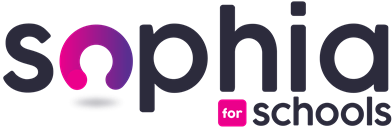Teaching Reading Skills

Course Description:
This course covers Reading Skills comprehensively, presenting 10 separate skills with exercises and pointers on how to get students to improve their reading skills. The skills are demonstrated to be building upon one another hierarchically, across 3 levels. Skills in Level 1 are necessary to master Levels 2 and 3, and those in Level 2 are necessary to master Level 3. These 3 levels of skills are also how the course is presented, beginning with the ability to match sounds to symbols, and ending with how to read a text with biases of an author in mind. The course emphasises that the best way to get better and better at reading is to do it very often. This course could also be used when teaching students when English is not their first language. Exercises and texts are presented as potential resources the teacher can use when teaching.
Course Learning Objectives:
- Understand how to teach students to match sounds to symbols
- Explain the importance of sound-symbol mapping for early reading comprehension.
- Identify and teach content words to aid in quick understanding of texts.
- Provide a quick refresher on the definitions and roles of nouns, adjectives, verbs, and adverbs.
- Apply strategies to help students recover the content of what they have read.
- Guide students in maintaining focus during reading activities.
- Instruct students in scanning and skimming techniques, particularly in exam conditions.
- Teach students how to read analytically, and critically evaluate text.
- Enable students to synthesise information from multiple sources.
- Guide students in reading with the author’s perspective and potential biases in mind.
Course Learning Outcomes:
Upon completing this course, teachers will be able to:
- Teach students the fundamental skill of matching sounds to symbols, facilitating early reading development.
- Explain the significance of sound-symbol mapping for initial reading comprehension, leading to improved reading fluency.
- Identify and introduce content words that aid in quick text comprehension, helping students become better readers.
- Equip students with strategies to recover the content of what they have read, promoting better retention, and understanding of texts.
- Instruct students in effective scanning and skimming techniques, particularly in exam conditions, enhancing their ability to quickly extract information from texts.
- Foster a habit of extensive reading among students, broadening their vocabulary and improving overall reading skills.
- Teach students to read analytically, enabling them to critically evaluate and interpret texts.
- Assist students in making informed decisions about what to read efficiently, saving time and improving the relevance of their reading material.
- Guide students in reading with the author’s perspective and potential biases in mind, promoting critical thinking and a deeper understanding of texts.
By the end of this course, teachers will be well-prepared to impart these essential reading skills to their students, helping them become more proficient and critical readers.
Resources & Assessment:
- The course provides a range of resources to support learners and facilitate the application of acquired knowledge.
- The course features ungraded, in-course quiz questions designed to assess comprehension of the material. Learners will have the flexibility to attempt these questions multiple times until they arrive at the correct answer. Although the review quizzes are optional, it is strongly advised that participants aim to identify the correct answers to confirm their grasp of the course content.
- The course incorporates a comprehensive final assessment, known as the ‘Course Test’, designed to evaluate participants’ understanding of the essential concepts covered throughout the course. Upon successfully passing this test, participants will be awarded a course certificate.




